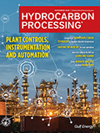
Current Issue: November 2025
Special Focus: Process Controls, Instrumentation and Automation
Process/Plant Optimization
Petrochemical Technologies
Digital Technologies
Valves, Pumps, Compression and Turbomachinery
Maintenance, Reliability and Inspection
Environment and Safety
Current Digital Edition

Sign up to Receive Our Newsletter
Latest News
- NAPCOR releases 2024 PET recycling report highlighting system efficiency gains and continued strength of PET circularity 12/12
- OQ courts other partners for petrochemical complex in Oman as SABIC drops out 12/12
- Brazil's BNDES approves $71 MM for carbon storage project 12/12
- Cuba on edge as U.S. seizure of oil tanker puts supply at risk 12/12
- China oil demand to plateau between 2025 and 2030 12/12
- Germany's PCK refinery says no impact from pipeline leak 12/12
Construction Boxscore: Project Spotlight
Project:
Long Son Petrochemicals Complex
Location:
Long Son, Vietnam
Operator:
Siam Cement Group
Cost:
$5.4 B
Capacity:
1.65 MMtpy
Completion date:
2023
Status:
Under Construction




